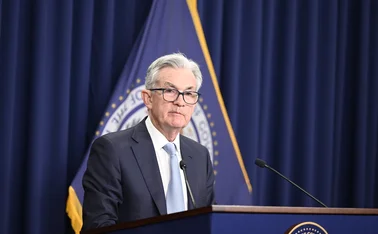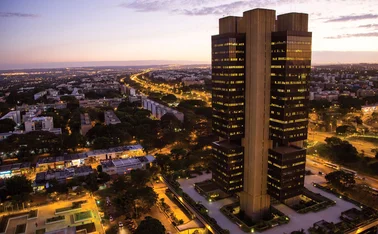
Rates round-up: Chile accelerates tightening
Plus Central African states, Jamaica and Georgia all order 50bp rises

Chile: The Central Bank of Chile has accelerated the monetary policy tightening process it started in 2021.
In the first meeting under governor Rosanna Costa, on March 29, the board unanimously voted in favour of increasing interest rates by 150 basis points. This takes the key policy rate to 7%.
The institution started off this cycle in July 2021, when interest rates still stood at the record low of 0.5%. Persistently high inflation has demanded the central bank to accelerate this tightening process.
In February, headline inflation was 7.8%, considerably over the 3% target over a two-year horizon. The board noted this reading was almost one percentage point over the forecast included in the December monetary policy report.
This increase was mainly due to higher core inflation, especially in goods prices. “The short-term inflation outlook has been revised upward again, bringing annual inflation closer to 10%. Inflation expectations in the two-year horizon have remained above 3% for several months,” said the policy statement.
Nonetheless, the board pointed out that “if the assumptions in the central scenario of the March Monetary Policy Report prove correct, future increases in the MPR [monetary policy rate] would be smaller than those of recent quarters.”
This was also the first policy meeting of board member Luis Felipe Cespedes, who joined the institution in February in the place of Joaquin Vial. Earlier this month, the senate approved the appointment of Stephany Griffith-Jones to the board. However, she will not formally join the institution until May 1.
The Chilean economy recovered quickly from the deep downturn created by the Covid-19 pandemic. In 2020, GDP declined by 6%, but in 2021 the economy expanded by 11.7%. Nonetheless, this expansion is slowing down partly as a result of higher inflation, and the tighter fiscal and monetary approach it is requiring.
Central African states: The Central African monetary policy committee decided to raise the benchmark tender rate, one of its region’s policy rates by 50 basis points, from 3.5% to 4%, on March 28.
The move follows a November 2021 decision to raise the tender rate by 25 basis points, the first rate hike since 2018. The MPC had kept the tender rate at 3.25% between March 2020 and November 2021.
The committee did not give a detailed explanation for its decision. Its release only said that it acted examining “risk factors” that might affect “monetary stability”, the evolution of the money market and “short- and medium-term macroeconomic policies”.
A Cameroonian newspaper, Investir au Cameroun/Business in Cameroon, quoted a BEAC press release that said inflationary pressures had motivated the decision. The release projects inflation of 3.6% in 2022, due to hikes in import costs and an expanding money supply.
The central bank issues the Central African CFA franc, which is pegged to the euro at a fixed rate of €1 = 655.957 CFA francs.
Georgia: The Georgian central bank raised the country’s policy rate by 50 basis points to 11% on March 30. This was the first hike of 2022, following four rate increases in 2021. In total, the central bank has raised interest rates by 3% since the start of 2021.
The National Bank of Georgia says year-on-year consumer price index inflation reached 13.7% in February. The central bank projected inflation would decline in March as the base effects of a hike in controlled prices passed out, but that the Russo-Ukrainian war has added new upside pressures. Without it, “this reduction [in inflation] would have been much larger”.
The central bank’s inflation target is 3%. However, Georgia has been struggling to meet this target in recent years. According to Georgian statistics, CPI inflation has been above 3% for all but two months since January 2020. International Monetary Fund figures give an average rate of 4.9% in 2019. Since July 2021, inflation has been continuously above 10%.
In its March 30 release, the central bank said that, although GDP growth and domestic inflationary pressures would moderate in 2022, inflation “will remain above the target during the year”.
Much Georgian inflation is imported, the result of high commodity prices and inflationary pressures among Georgia’s trading partners. The war will increase these sources of external inflation and unsettle the foreign-exchange markets, the NBG said in its March 30 press release.
Jamaica: The Bank of Jamaica’s monetary policy committee raised rates from 4% to 4.5% on March 30. The move is the fifth consecutive hike, that between them have added 400 basis points to the reference rate since last September.
The committee cited excessive inflation that “would continue to breach the target range for a more extended period and at higher rates than previously anticipated”. Inflation stood at 10.7% in February, according to the MPC press release.
The Bank of Jamaica aims for 4–6% inflation. Inflation was last within the target range in the summer of 2021.
In February, the central bank said that inflation would peak this year somewhere between 9% and 11%, before falling back within target by year’s end. “The risks to this inflation forecast are skewed to the upside”, the central bank said in its March 30 report.
Jamaica only introduced its MPC last year, after reforms to the central bank law which came into effect in April. The five-member body includes the governor, two deputy governors and two external members.
Mozambique: The Bank of Mozambique’s monetary policy committee raised its benchmark rate by 200 basis points to 15.25% today. This is the first time in 14 months that the Mozambican central bank had increased the policy rate.
In its press release, the Mozambican MPC cited upside risks to inflation “in the short and medium term”. The MPC said inflation was 6.4% in February.
Among the risks to price stability, the release referred specifically to the Russo-Ukrainian war, supply chain bottlenecks and natural disasters that had struck the north and centre of the country. The country also suffers from an ongoing armed insurgency. The committee noted price spikes in fuel and food products.
Correction: The first edition of this article identified BEAC’s rate on tenders as its policy rate. BEAC in fact has four policy rates, two of which it (the tender and short-term liquidity rates) being those has adjusted in recent decisions. Central Banking regrets the error.
Only users who have a paid subscription or are part of a corporate subscription are able to print or copy content.
To access these options, along with all other subscription benefits, please contact info@centralbanking.com or view our subscription options here: http://subscriptions.centralbanking.com/subscribe
You are currently unable to print this content. Please contact info@centralbanking.com to find out more.
You are currently unable to copy this content. Please contact info@centralbanking.com to find out more.
Copyright Infopro Digital Limited. All rights reserved.
You may share this content using our article tools. Printing this content is for the sole use of the Authorised User (named subscriber), as outlined in our terms and conditions - https://www.infopro-insight.com/terms-conditions/insight-subscriptions/
If you would like to purchase additional rights please email info@centralbanking.com
Copyright Infopro Digital Limited. All rights reserved.
You may share this content using our article tools. Copying this content is for the sole use of the Authorised User (named subscriber), as outlined in our terms and conditions - https://www.infopro-insight.com/terms-conditions/insight-subscriptions/
If you would like to purchase additional rights please email info@centralbanking.com







